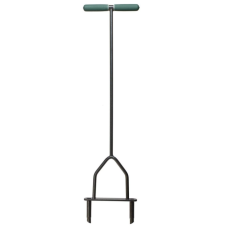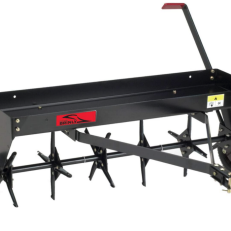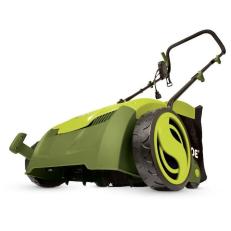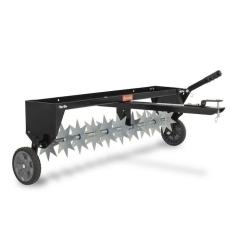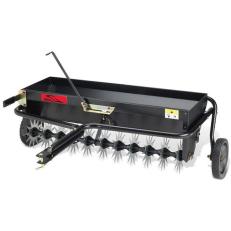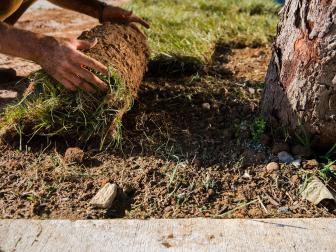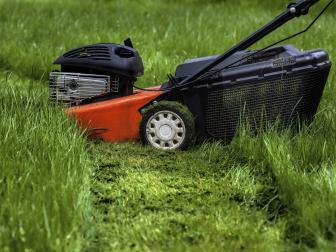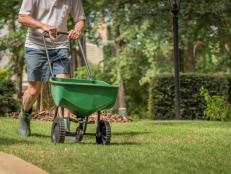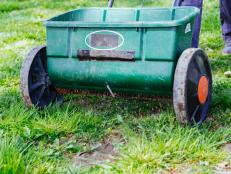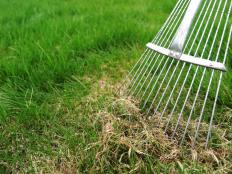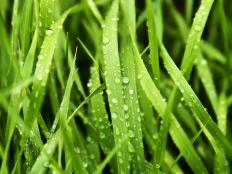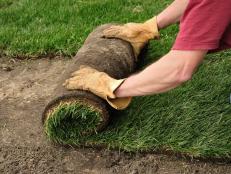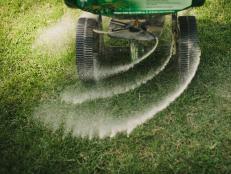How to Aerate Your Lawn
Lawn aeration encourages deep roots, resulting in a healthy lawn. Learn how to give your grass a breath of fresh air with these aerating tips.
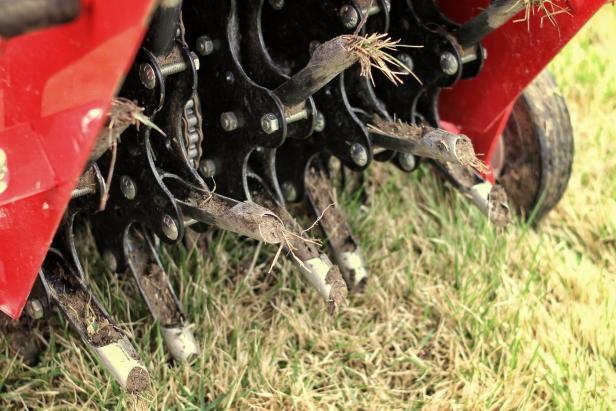
Shutterstock/Alan Kidd
Aerating is the process of scooping or “coring” holes into your lawn so oxygen, water and nutrients can penetrate deeper into the soil.

If your lawn is showing a bit of wear and tear and water isn't penetrating through the surface, it could be time to aerate your lawn.
Backyard soccer games, hundreds of laps run by the family dog, sweltering temps and that way-too-competitive father-son badminton tournament have likely left their mark: thinning grass and soil that feels brick-hard underfoot. Your lawn could use a breath of fresh air — literally.
What is Aerating a Lawn?
Why Aerate a Lawn
Aerating is the process of scooping or "coring" holes into your lawn so oxygen, water and nutrients can penetrate deeper into the soil. Aerating also can break up soil that's been compacted and hardened by heavy summer use.
"When you aerate and get oxygen deeper into the soil you are encouraging deeper roots, which in turn will improve a grass's drought tolerance and durability," says Gary Peiffer, an agent with the DeKalb County Extension Office in Georgia.
When to Aerate Your Lawn
It's best to aerate when lawns are actively growing. Depending on your climate, here's the best time of the year to aerate:
Cool-season grass, such as fescue, rye or bluegrass — August through October.
Warm-season grasses, such as Bermuda, zoysia or St. Augustine — Consider aerating in the warmer months of April through June.
Does My Lawn Need Aeration?
Lawns that suffer heavy foot traffic and consist of clay soil get compacted more easily, so they likely need to be aerated more often. Does rainwater run off your lawn without soaking in? Did your lawn turn brown after a few days of hot weather? If so, it might be time to aerate.
Another check: Dig into a square-foot section of your lawn and inspect how deep your grass's roots grow. If they extend less than two inches into the soil, then it's time to aerate.
Before You Aerate
Peiffer says the best aerating machines are those with hollow, metal tines that penetrate the ground and pull plugs of soil from the lawn. You can help the tines penetrate deeper by watering your lawn one to two days prior to areating.
Apply about an inch of water to the grass. Here's how to measure your watering: Place a small tuna can in the middle of your lawn and turn on the water. When the can fills up, you've watered enough.
Mark any sprinkler heads or other lawn obstacles with flags. You'll want to be sure to operate the machine with care around these so the aerator won't gobble them up.
Buy Lawn Aerators
Using the Aerator
The aerator's tines will penetrate the lawn about 2 inches deep, and you'll want to guide the aerator across your lawn in at least two different directions. The plugs pulled from your lawn will break down in a few weeks, depending on the weather (less time if it rains), so you can just leave them on the ground. You can spread compost or a good soil mix to fill in the holes, and you can also choose to spread fertilizer or seed at this time.
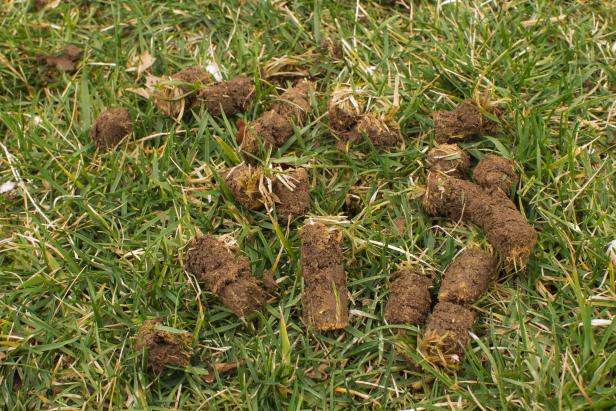
Ahutterstock/Sherry Barr Photography
The plugs pulled from your lawn by the aerator will break down in a few weeks, depending on the weather (less time if it rains), so you can just leave them on the ground.
Renting an Aerator
You generally can rent aerating machines from home improvement stores or garden centers for between $60 and $80, depending on how long you'll need the machine. Be sure to factor in time you'll need to spend cleaning up the machine before you return it. They're heavy, so bring some muscle with you when you pick up a rental.
But, operating them isn't much more difficult than mowing your lawn with a self-propelled mower. And in the summer the family dog — not to mention your kids — will appreciate the time you spend now.
More Lawn Advice
How to Kill Crabgrass
Get tips for preventing crabgrass from taking hold in your lawn.
How to Lay Sod
Instantly renew your lawn by installing sod. We'll show you how.
12 Spring Lawn Care Tips to Ensure a Beautiful Yard All Year Long 13 Photos
Get our spring to-do list for maintaining a lush, healthy lawn year-round.
Don't Let the Weeds Win, Learn the Right Way to Mow 13 Photos
Grow a healthy, lush lawn with these 13 essential mowing tips.

.-Battle-on-the-Beach-courtesy-of-HGTV.-.jpg.rend.hgtvcom.196.196.suffix/1714761529029.jpeg)




